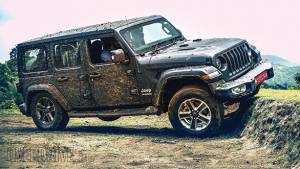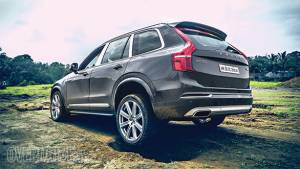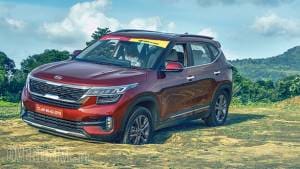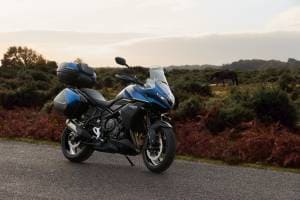2019 OD SUV Slugfest: On-road performance
Soft-roaders is a term that you may have heard often. If you are wondering what it means, it simply refers to an SUV that doesn't have as much off-roading capability as the likes of hardcore mud-pluggers like the Wrangler but is better equipped than regular cars to take on broken roads, undulations and poor road surfaces. So while they may not boast lockable differentials and transfer cases, they (at least) have high ground clearance, rugged tyres and longer suspension travel to cope with poor road conditions, compared to regular sedans and hatchbacks. That capability, though limited, makes soft-roaders the preferred choice over most other cars and body styles we know of. SUVs are trending - and that is also the basis of conducting this exhaustive report - but the majority of these are soft-roaders. All these cars will also spend the most part of their life plying on the tarmac, including the Wrangler Sahara which is the yardstick in this test for off-road performance. And therefore, the on-road performance of all these cars is perhaps the most important parameter of this test.
We have looked at highway stability, handling manners, the quietness of the cabin at speed, touring capability with a full house and their luggage, braking and in-gear acceleration and overall performance for daily use. Honestly, we haven't gone about testing these cars separately for this parameter. The reason being, we have been living with most of them since their launch - either as a part of the OVERDRIVE long term test garage, or because they have been a part of various tests, comparative reviews or travelogues at OVERDRIVE. Some of the more recent entrants like the Kia Seltos, Hyundai Venue, MG Hector and the XUV300 however needed our special attention.
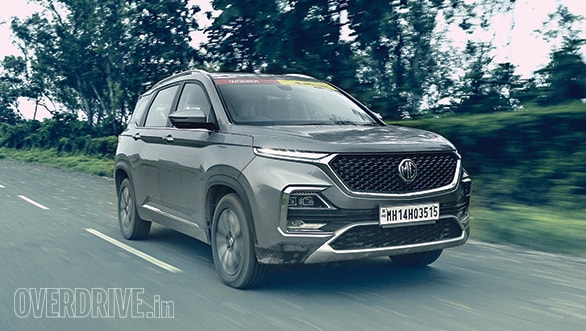
The Venue, Hector and the Seltos were closely scrutinised because they came to us only close to conducting this mega test, but the XUV for a different reason altogether. If the XUV500 was inspired by the Cheetah, its compact counterpart seems to be modelled after a stray cat - for that is how unpredictable it has been in its time at OD. On some occasions, it has left us unnerved with its unstable performance at highway speeds, while on some other drives it impressed us with its eagerness and handling. The car that arrived for this test, however, was the obedient kind and felt confident with its dynamics. There is a sense of solidness to it, like most Mahindra SUVs, and this is easily their best effort yet at the sub-4m space. But the car still has its rough edges like the inconsistent braking feel and vague steering response and pales in comparison to the competition when it comes to noise insulation at highway speeds and over ruts, joints and broken roads, making it feel quite utilitarian for its price point.
The Hyundai Venue and the MG Hector can be polarising when it comes to their dynamics and it is all down to the variant you choose. The sprightly 1.0-litre petrol variant of the Venue has a more planted feel than its practical 1.4-litre diesel counterpart - both at highway speeds, as well as around twisties. This phenomenon is vice-versa in the Hector, with the diesel variant feeling far more stable and confident than its light-footed and wallowy petrol counterpart. The diesel Hector is also the one to go for if you need an inexpensive and fairly large SUV to haul five in comfort.
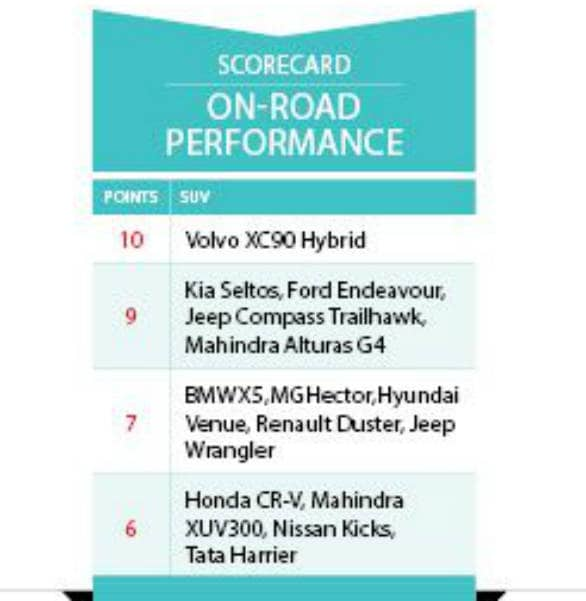
Within the sub-20-lakh rupee SUVs however, the Seltos scores high with the most consistent handling performance and road manners, across variants. It is based on the strong foundation of the segment-leading Creta, and KIA only makes it better. Its supple ride quality and the low NVH in the cabin stand out and are comparable to cars from a segment or two higher. The Venue, Seltos, Hector and the Compass offer DCT gearboxes on their petrol engines, but the two Koreans have certainly done a better job at reducing the characteristic lag and slow responses of small-engined-DCTs and that imparts these two cars with a more premium driving feel in the city if you were to choose a DCT 'box. Having all its engines certified for BSVI emissions, only makes the case stronger for the Seltos. In a nutshell, then, the compact Kia Seltos is the car to beat in the sub-20-lakh rupee space when it comes to on-road performance.
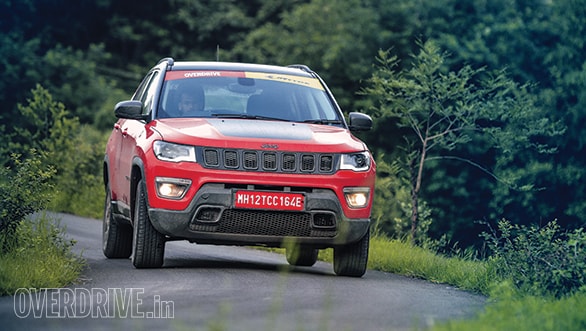
The Jeep Compass has been our handling benchmark for compact SUVs, irrespective of the price bracket, and the Trailhawk doesn't drift away from that yardstick despite having a higher ride height and a softer, off-road focussed suspension setup compared to its Limited counterpart. The underrated Koni FSD suspension continues to impress with a fine balance of taut dynamics, high-speed stability and a supple ride. The Compass is a great touring machine, but the automatic gearbox of the Trailhawk is a bit of a let down with its slow response times.
The Compass lends its engine to the Hector and the Harrier, but the Harrier uses a lower state of tune for it and it shows in its on-road performance. While its solid build, exceptionally good ride quality and the Lotus-tuned dynamics work well for the Harrier, the engine performance feels a bit lacklustre, especially when travelling with five occupants and luggage. Its vague steering and spongy brakes could also become a matter of worry for frequent highway travellers. The Harrier also has questionably large wing mirrors which not only hamper cornering visibility but also create a massive blind spot and lead to pronounced wind noise at highway speeds.
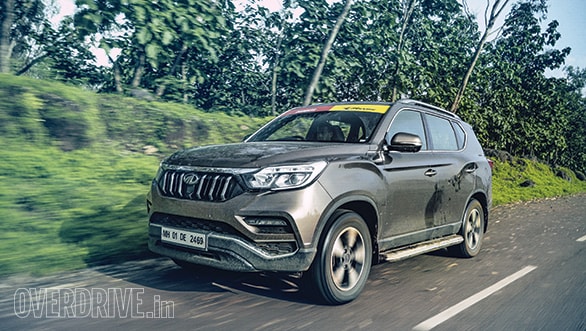
The Alturas G4 is a far more accomplished effort by an Indian carmaker. Its 2.2-litre engine is a reflection of what you get in cars from a segment higher. The engine is well-refined, and despite the heft of this car, it provides all the poke you'll need for the city as well as highway use. The oil-burner doesn't get burdened even with a full house and complements the confident highway manners of this car extremely well. The G4 boasts of a plush ride too, which makes it quite the all-rounder when it comes to on-road performance in a hefty SUV.
In the gathering of these large SUVs, the CR-V gets lost. Though there is nothing remarkable about it, it is a good all-round package. The engines feel adequate, the gearboxes are pretty laid back, but the overall performance feels a bit dull in comparison to cars from a segment lower and higher.
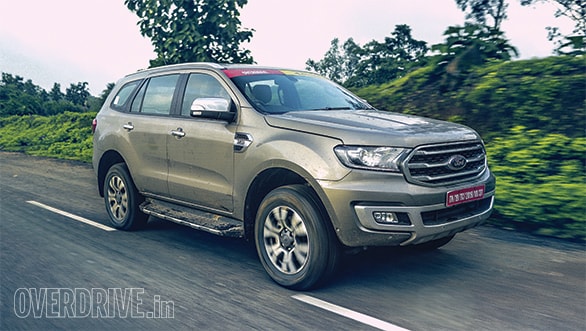
Speaking of the biggies, the Endeavour deserves more than a mention. It is one of the most well-built full-size SUVs that you can put your money on and despite its heft, the high floor of this car makes the cabin feel very car-like and takes away the floaty feel that one usually gets wary of in SUVs of this size. It has the best ride, and benchmark handling dynamics for this size and overall visibility is excellent - making this brute easy to drive even for people upgrading from smaller vehicles. The 3.2-litre engine is a gem of a motor and is just as enthusiastic as its specs would suggest. One wouldn't lose much choosing the lesser 2.8-litre variant, as the real-world performance remains more or less the same for both - if anything, it only gains with better fuel economy.
The Endeavour could be all the SUV you will ever need and from here on, you are only spending on the badge or the opulence, more than the capabilities. The likes of the Wrangler are an exception to that, of course, but we will come to that in a bit. In this test, the best example for indulgence in the badge and opulence is the Volvo XC90. Its opulence stretches far beyond its features list (which we have spoken of elsewhere in this test.) This is by far the gold standard of what a silent cabin on wheels should feel like - whether you are driving at city or highway speeds. The silence comes courtesy of an extremely refined petrol engine, mated to an electric motor for a hybrid powertrain. The two work in discreet harmony and ensure everything from spooky quiet all-electric propulsion in the city and composed highway cruising to an exceptional all-wheel-drive system that can aid both - spirited driving and enhanced safety. An adaptive suspension complements it all and offers a plush ride that is pretty much on par with the best in the business. In fact, the XC90 gives even the Range Rover Sport a run for its money on multiple fronts, and that is a big achievement.
Unfortunately absent in this test, the Range Rover Sport is a great example of the perfect balance between a high degree of off-road capability and blistering on-road performance. In comparison, the BMW X5 fails to achieve either. Known to be the erstwhile flag-bearer of sporty SUVs, the new X5 is utterly soft even in its stiffest setting, in a failed bid to match the comfort of its competitors like the Q7. If anything, its surprisingly wallowy nature makes us question the badge on the hood.
The Wrangler Sahara is the road-focused version of the off-road icon and therefore the choice of 18-inch wheels and a more road-biased 4x4 system that automatically shifts to a two-wheel-drive mode when required. The latter also makes the Wrangler feel lighter on its feet and relatively agile for its form. The solid axles can be discomforting when driving on the tarmac and lead to frequent vibrations in the cabin, the pedals and the steering. The Wrangler squats its way to an 8s 0-100 sprint, with the surprisingly potent 2.0-litre petrol engine. But the rigid frame also has a fairly bouncy ride, compared to the soft-roaders. The removable doors and roof make the cabin quite noisy too, even when you are fully enclosed - but as they say with the Wrangler, "It's just a Jeep thing." After all, the Wrangler is the ultimate off-roader and the flip side is evident in its on-road purpose.
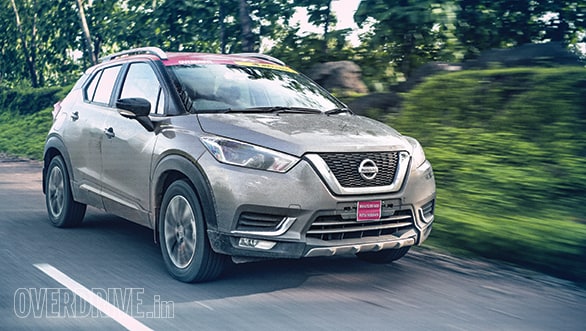
Speaking of fitness of purpose, we come to the final two cars of this test - the Renault Duster and the Nissan Kicks. Both united by their platform and divided by their purpose. The Duster began life as a low-cost crossover that aimed to be the Jack of all trades and the Duster AWD achieves that quite well. The diesel is the engine to choose with the Duster for that is the only one that comes with the all-wheel-drivetrain. It has plenty of go in it despite what the figures suggest. It is a robust package overall that works quite well on tarmac and the Indian road conditions. It imparts a sense of invincibility in the way it handles road imperfections, or with its planted feel at highway speeds. The only fly in the ointment is the pronounced kick-back from the steering, which makes it quite cumbersome around winding or broken roads. Among its new-age competition, the Duster feels quite utilitarian but it lives up to its purpose quite well and that continues to work for it even in the updated avatar seen here.
The Nissan Kicks, on the other hand, was conceived to be the softer, more sophisticated alternative to the likes of the Duster and the Terrano. Its global counterpart achieved that target quite well with its Nissan Juke underpinnings and is one of the most convenient and easiest to drive compact crossovers. But to lose the 'compact' tag, the Indian Kicks is based on the Duster's underpinnings and fails to lose the utilitarian feel we complained about. And therefore, though it has a similar, invincible feel as the Duster, it fails the fitness of purpose. If you had to ignore the more advanced competition in this space and choose between the Duster, Terrano, Kicks and Captur - which are more or less the same cars with different top hats - the Duster is the better product overall, thanks to the AWD capability.
Read the rest of the 2019 OD SUV Slugfest 2019 below:
2019 OD SUV Slugfest: The Mega SUV Special
2019 OD SUV Slugfest: Street Presence
2019 OD SUV Slugfest: Interiors
2019 OD SUV Slugfest: Features
2019 OD SUV Slugfest: On-road performance
2019 OD SUV Slugfest: All-terrain performance
2019 OD SUV Slugfest: Fuel Efficiency
2019 OD SUV Slugfest: Value
2019 OD SUV Slugfest: Conclusion
Watch the 2019 OD SUV Slugfest video below:
Starts Rs 74.9 Lakhs
2998cc
Automatic
265
450
11.24 Kmpl
Starts Rs 7.53 Lakhs
1493cc
Manual
83
240
-NA-
Starts Rs 17.79 Lakhs
1956cc
Automatic
163
350
14.9 Kmpl
Starts Rs 9.95 Lakhs
1497cc
Automatic
115
250
20.8 Kmpl
Starts Rs 12.9 Lakhs
1496cc
Manual
143
250
15.8 Kmpl
Starts Rs 9.5 Lakhs
1330cc
CVT
156
254
14.23 Kmpl
Starts Rs 8.49 Lakhs
1330cc
CVT
156
154
-NA-
Starts Rs 80.9 Lakhs
1969cc
Automatic
235
420
-NA-
